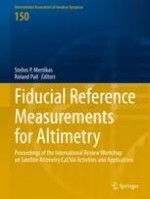These proceedings include selected papers from the International Review Workshop on Satellite Altimetry Cal/Val Activities and Applications, held in Chania, Crete, Greece, on 23-26 April 2018. Organised in the context of the European Space Agency Project “Fiducial Reference Measurements for Altimetry” the workshop was cosponsored by the International Association of Geodesy (in particular by the IAG Commission 2, Gravity Field), the European Space Agency, the European Union (the Copernicus Programme), the European Organisation for the Exploitation of Meteorological Satellites (EUMETSAT), Space Geomatica P.C., and the Municipality of Chania.
The workshop presented the latest research in the field of satellite altimetry calibration and altimetry applications for monitoring ocean changes and improving Earth observation in an objective, continuous, homogeneous and reliable manner, free of errors and biases. Further, it supported long-term monitoring of climate change by providing a better understanding of environmental changes in the world's oceans, terrestrial surface waters, and Arctic and Antarctic Regions. The outcome was the creation of a scientific roadmap with procedures, protocols, guidelines, and best practices to help international groups working on satellite altimetry to establish SI (Système International d'Unités) traceability of their measurements, results and data products.
